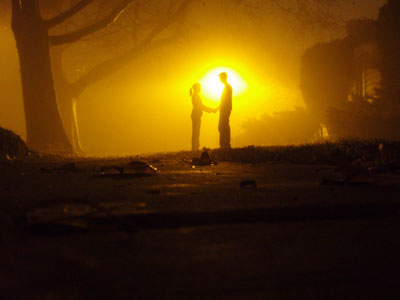All Nonfiction
- Bullying
- Books
- Academic
- Author Interviews
- Celebrity interviews
- College Articles
- College Essays
- Educator of the Year
- Heroes
- Interviews
- Memoir
- Personal Experience
- Sports
- Travel & Culture
All Opinions
- Bullying
- Current Events / Politics
- Discrimination
- Drugs / Alcohol / Smoking
- Entertainment / Celebrities
- Environment
- Love / Relationships
- Movies / Music / TV
- Pop Culture / Trends
- School / College
- Social Issues / Civics
- Spirituality / Religion
- Sports / Hobbies
All Hot Topics
- Bullying
- Community Service
- Environment
- Health
- Letters to the Editor
- Pride & Prejudice
- What Matters
- Back
Summer Guide
- Program Links
- Program Reviews
- Back
College Guide
- College Links
- College Reviews
- College Essays
- College Articles
- Back
Rhetorical Analysis of Bogards "Let There be Light"
With human progress, setbacks arrive. Bogard identifies light pollution as one of these setbacks. Through his use of expert testimony, tone, and imagery, Paul Bogard establishes the idea that natural darkness should be preserved for future generations.
Bogard effectively uses statistics from expert sources to evoke fear in his audience to encourage them to accept his proposal for preserving natural darkness. For instance, Bogard cites World Health Organization, which, "classifies working the night shift as a probable human carcinogen." Logically, this cases the audience to believe that light pollution, something prominent during the night shift, is not natural for our bodies and thus may be detrimental to your health. People, concerned about their health may then believe Bogard because they care about their own health. Later, Bogard also states that the, "American Medical Association has voiced its unanimous support for “light pollution reduction efforts and glare reduction efforts at both the national and state levels.”" His use of expert testimony transfers their credibility onto himself. This makes his audience more receptive to the idea of preserving natural darkness since his use of expert testimony gives him authority.
Additionally, Bogard's tone implicitly suggests that light pollution threatens darkness, something precious. Bogard develops a prudent tone through his word choice. By using phrases such as, "all life," "the rest of the world depends," and "every religion has considered darkness invaluable," he creates a cautionary tone that also guilt trips his audience. If they do not help preserve natural darkness, then they are contributing to it. Natural darkness represents natural beauty and evokes a sense of traditional value in some religions and cultures. Bogard's tone suggests that if we do not proceed with caution in treating light pollution, it will be the fault of his audience. This guilt causes his audience to accept his argument.
Bogard also uses imagery to illustrate how light pollution harms the world. Using a metaphor, Bogard illustrates light pollution as a bulldozer that is, "wrecking habitat and disrupting ecosystems several billion years in the making." It is this image that helps associate light pollution as disastrous; this helps contribute to the idea that natural darkness should be preserved. Furthermore, when Bogard juxtaposes the image of a loud, fast, lighted world with the calmness of the light, his contrast helps show that natural darkness truly encompasses an irreplaceable image and place for solitude. This helps promote his argument since his images evoke a sense of awe in his audience. Bogard, a master rhetorician, in this case uses imagery as a way to tap into the readily available emotions of his audience who may love nature.
Overall, in his article, "Let There Be Dark," respectied journalist, Paul Bogard, effectively appeals to his author's emotions and elevates his credibility by using expert testimony, using tone, and by using compelling imagery. it is through these three rhetorical strageties that Bogard makes a compelling argument.

Similar Articles
JOIN THE DISCUSSION
This article has 0 comments.

SAT Prep
Stop light pollution by switching to LED and turn off your lights by 10 PM.